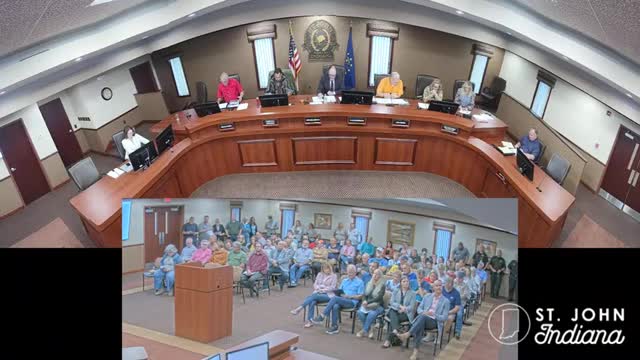Town Council Approves 2026 Budget Hearings Amid Fiscal Changes
September 25, 2025 | St John Town, Lake County, Indiana
This article was created by AI summarizing key points discussed. AI makes mistakes, so for full details and context, please refer to the video of the full meeting. Please report any errors so we can fix them. Report an error »

The Town Council of St. John, Indiana, has taken significant steps towards finalizing the 2026 municipal budget, which encompasses the civil town, sanitary district, and water district. During the meeting held on September 24, 2025, the council approved the necessary hearings to proceed with budget discussions, marking a crucial phase in the town's financial planning.
Financial advisors from Baker Tilly, Amber Nielsen and Eric Walsh, presented a comprehensive overview of the town's financial status and projections. They highlighted a historical analysis of property tax revenues, circuit breakers, and net assessed values over the past five years, indicating a positive trend in the town's financial health. The town has benefited from increasing net assessed values, which have helped maintain low tax rates and minimize revenue losses from circuit breakers.
Looking ahead to the 2026 budget, the council faces new challenges due to the anticipated impacts of Senate Enrolled Act 1, which is expected to result in a loss of over $1 million in revenue, primarily affecting the general fund. This legislation will phase in changes that could alter the town's financial landscape significantly. The maximum levy growth for property taxes is capped at 4%, a reduction from what would have been a higher growth rate without the cap.
The council also discussed the importance of fiscal responsibility and resource allocation in the upcoming budget, emphasizing the need for a balanced budget that promotes sustainable growth. The estimated gross levy for the civil town and associated districts is projected to be approximately $10.1 million, with a circuit breaker of over $6 million, indicating that the town is effectively managing its tax revenue.
As the council prepares for the next steps in the budgeting process, including finalizing tax rates and addressing the implications of the new legislation, the focus remains on ensuring public trust and stability in the town's financial management. The council's proactive approach aims to navigate the challenges ahead while maintaining the quality of services for St. John's residents.
Financial advisors from Baker Tilly, Amber Nielsen and Eric Walsh, presented a comprehensive overview of the town's financial status and projections. They highlighted a historical analysis of property tax revenues, circuit breakers, and net assessed values over the past five years, indicating a positive trend in the town's financial health. The town has benefited from increasing net assessed values, which have helped maintain low tax rates and minimize revenue losses from circuit breakers.
Looking ahead to the 2026 budget, the council faces new challenges due to the anticipated impacts of Senate Enrolled Act 1, which is expected to result in a loss of over $1 million in revenue, primarily affecting the general fund. This legislation will phase in changes that could alter the town's financial landscape significantly. The maximum levy growth for property taxes is capped at 4%, a reduction from what would have been a higher growth rate without the cap.
The council also discussed the importance of fiscal responsibility and resource allocation in the upcoming budget, emphasizing the need for a balanced budget that promotes sustainable growth. The estimated gross levy for the civil town and associated districts is projected to be approximately $10.1 million, with a circuit breaker of over $6 million, indicating that the town is effectively managing its tax revenue.
As the council prepares for the next steps in the budgeting process, including finalizing tax rates and addressing the implications of the new legislation, the focus remains on ensuring public trust and stability in the town's financial management. The council's proactive approach aims to navigate the challenges ahead while maintaining the quality of services for St. John's residents.
View full meeting
This article is based on a recent meeting—watch the full video and explore the complete transcript for deeper insights into the discussion.
View full meeting
